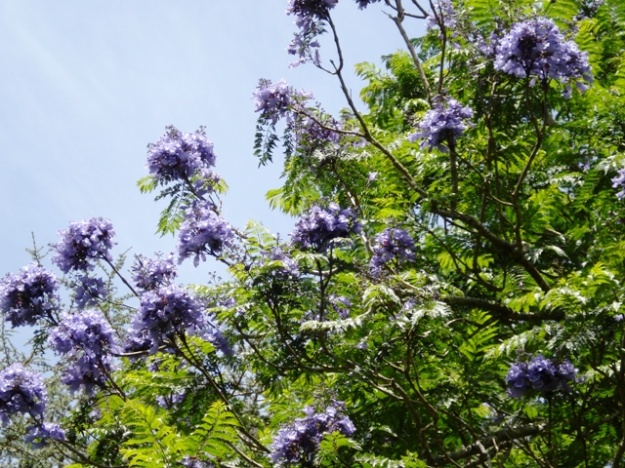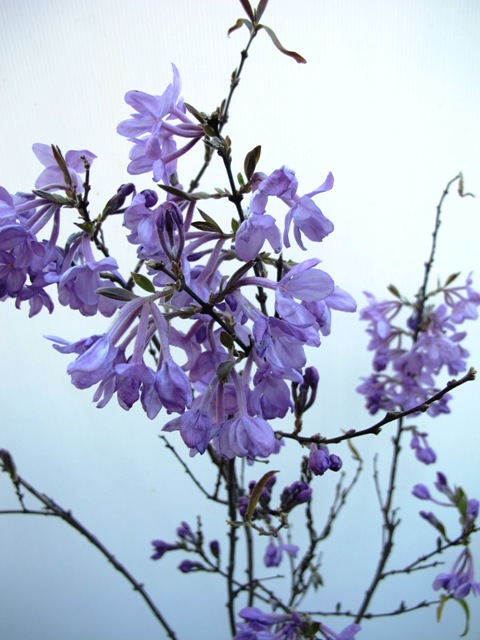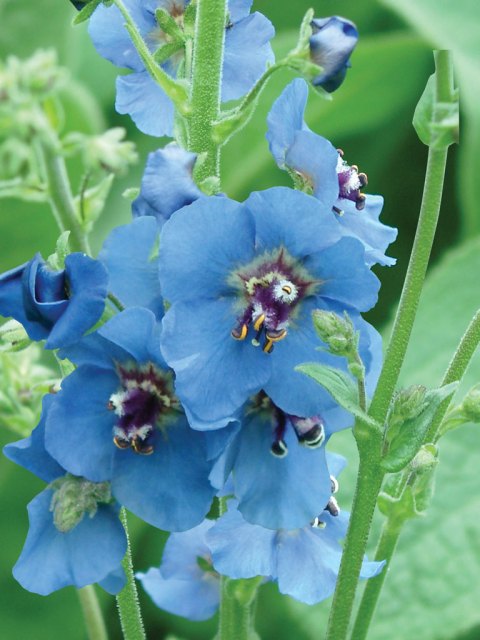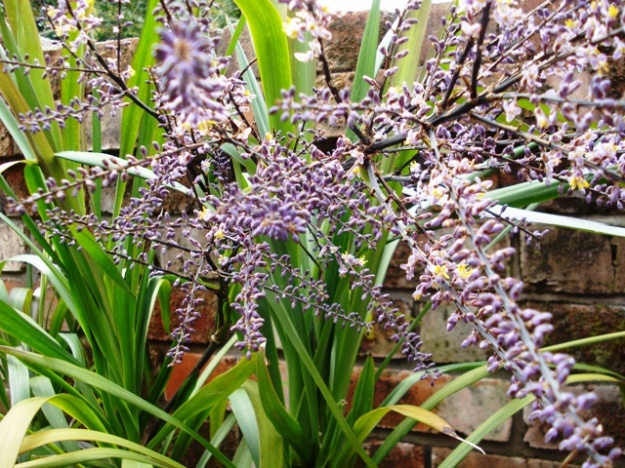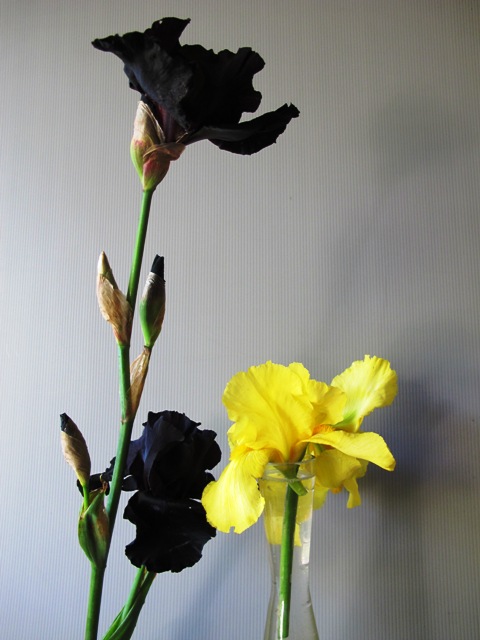
Magnolia Honey Tulip

Honey Tulip is going from strength to strength as the tree matures
The magnolia joy this week has been ‘Honey Tulip’. Mark is a modest plant breeder and inclined to describe a number of his best plants as a stroke of luck. I know how hard he works to get these so-called lucky breaks and there is not much left to chance. As we looked at a prominent specimen of ‘Honey Tulip’ at our entrance this week, he expressed relief again that it is indeed excellent and that we have not released a dog of a plant on the market. And he mused (again) that out of that particular controlled cross, he only got two yellows amongst the offspring and only one of those was of merit. That is what he calls a lucky break. I don’t think he is happy unless he gets a run of several – or many – very good similar seedlings worth considering but even then he worries into the future whether he picked the best one at the time to name and release! So the annual display that ‘Honey Tulip’ puts on for us is both a relief and a delight as it continues to go from strength to strength.
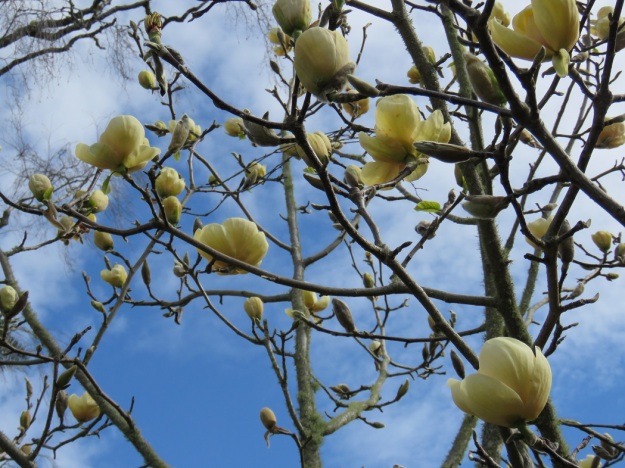
The battle with the rabbits continues. After the new lily border was decimated last year, it was a priority to try and get them up this year. While the bulbs will likely survive one year with all their growth having been chewed off, two years is stretching it. First, I spent a day erecting a mesh fence along the border. It was more diversionary than rabbit-proof. In an environment filled with tasty edibles, I just hoped they would take the hint and change their route. But the little fockers laughed at me. When the first shoots were chewed back to ground level in a single night, I started putting cut lengths of drainage tubes over the damaged ones. That works but there are literally hundreds of bulbs in that border and Mark didn’t think it was a realistic option for the whole area. He tried the expensive rabbit repellent spray we bought last year but they laughed at his efforts too.

Netting and tubes in an attempt to deter rabbits
Blood and bone works. Mark now does a daily round. He sprays water on the fresh shoots and sprinkles a light application of blood and bone on the wet surface. The moisture makes it adhere which means that he will only have to repeat the application after heavy rain. It requires vigilance and routine. We need to get them above maybe 40cm so the rabbits can’t chew off the top and the shoots can keep growing. It won’t matter then if they chew off the lowest leaves.
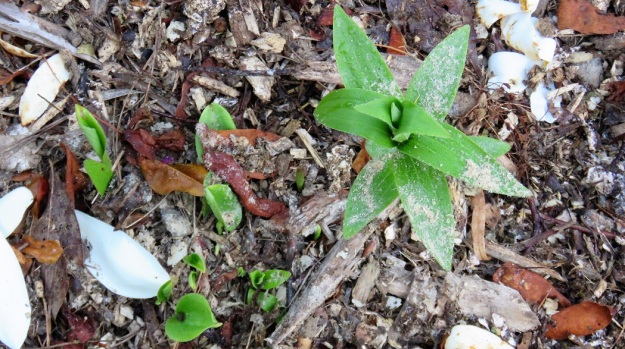
Blood and bone lightly sprinkled on damp foliage is the best rabbit deterrent so far
The longer term solution is obviously to reduce the rabbit population. Mark does daily rounds with the gun. The dogs have found the odd burrow of small ones, to their delight, but are pretty useless once they are larger and on the loose. We got desperate enough to buy some rabbit poison but it is also poisonous to dogs so it requires putting out at night and gathering it back up in the morning. On the first morning, not only had the rabbits totally ignored the bait but our Dudley dog ate one bait before Mark’s eyes. It put him off using it again. The option of getting a cat again is still on the table. It is the first time we have ever hoped a stoat may move back onto our territory to do a clean out of the rabbits. Not for the first time, we have muttered curses at the early British settlers in this country who introduced this pest so they could continue their what-ho-jolly-hunting traditions.

A magnolia bud that has been eaten out, usually by possums but we are now wondering if rats are also to blame
While on pests, a possum – or maybe rats – have wrought havoc this year on some of the magnolias in the distant parts of our property. You can see from the photograph how the offender has eaten into the bud and nipped out the centre at the point when the flower buds were forming. Every single bud on this tree was taken out, which is why Mark is wondering about rats as well as possums. It is very discouraging. Mark is the chief pest control officer here and he generally manages to maintain some sort of equilibrium with a combination of ongoing trapping and the gun but this year appears to be particularly bad.

Doryanthes palmeri or the Queensland spear lily
Two months on from when I first mentioned the Doryanthes palmeri coming into flower, I am coming to the conclusion that it does not open any more than this. I had envisaged that massive stem covered in open blooms but I think it may just gently continue for a long time yet, opening blooms in sequence without that mass display. The bees love it. Every time I pass, I can hear the audible hum and most of the open flowers have a bee foraging within them.
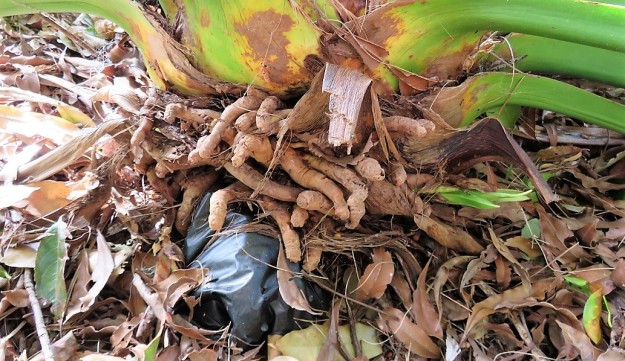 I mentioned it as a nursery relic cast aside. And indeed, I found confirmation of that this week as I was clearing around the plant. Behold, the original black planter bag, still around some of the root system. Some plants are tough and determined. It was not going to stay constricted by a pathetic little PB as we call these nursery bags.
I mentioned it as a nursery relic cast aside. And indeed, I found confirmation of that this week as I was clearing around the plant. Behold, the original black planter bag, still around some of the root system. Some plants are tough and determined. It was not going to stay constricted by a pathetic little PB as we call these nursery bags.
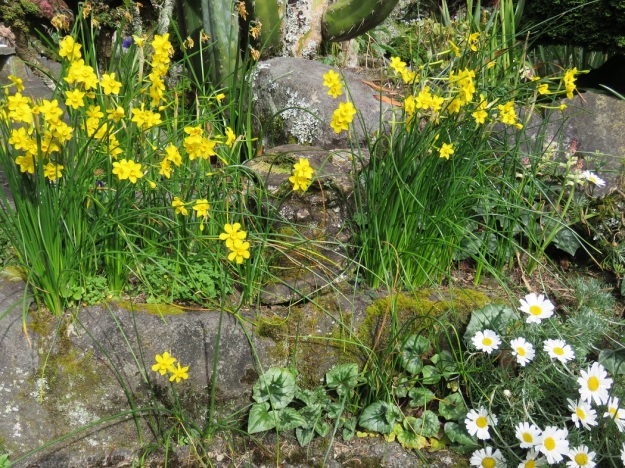
Dainty and fragrant Narcissus jonquilla
Finally, because we love the tiny as much as the large, here are two little scenes from the rockery. Spring is a glorious season here, never more so than when we get over a week without rain to enjoy the blooming. But suddenly we are on the cusp of the point where a long spring no longer beckons but instead we are under pressure to get the new plantings done before it is too late and we are too dry and too warm.

Moraea villosa or the peacock iris

 I am firmly of the view that you can never have too much blue in the garden. While green is effectively colour neutral – every garden has green and usually in abundance – blue is the versatile colour that fits in with all others. The addition of a little blue can lift a pastel colour scheme, add complexity to a white garden, make orange zing or stand as an equal partner in a blue and yellow border. No matter what the dominant colour scheme is, blue will fit in.
I am firmly of the view that you can never have too much blue in the garden. While green is effectively colour neutral – every garden has green and usually in abundance – blue is the versatile colour that fits in with all others. The addition of a little blue can lift a pastel colour scheme, add complexity to a white garden, make orange zing or stand as an equal partner in a blue and yellow border. No matter what the dominant colour scheme is, blue will fit in.

